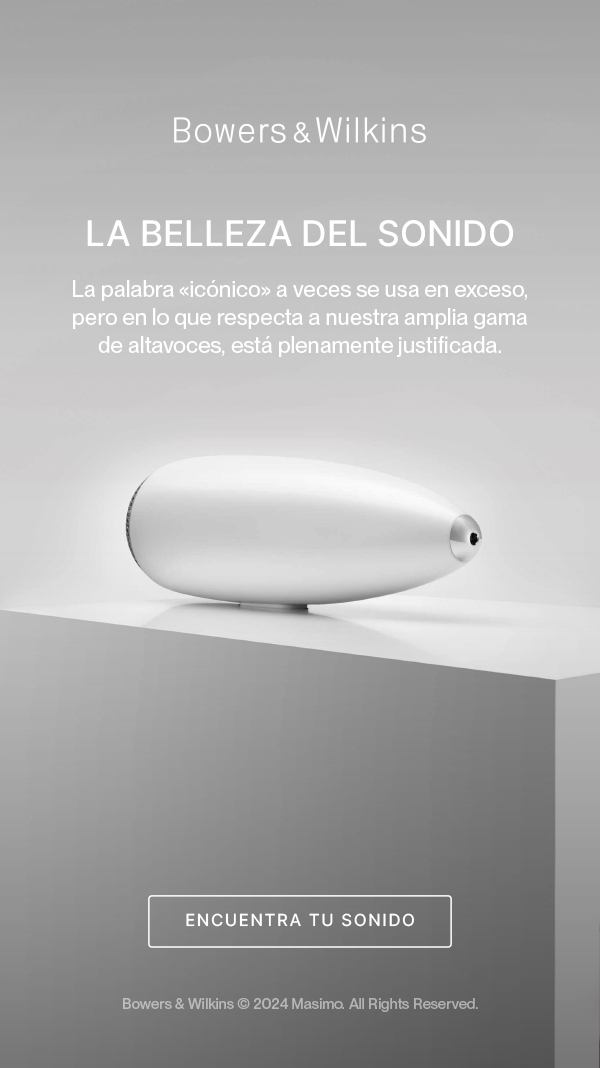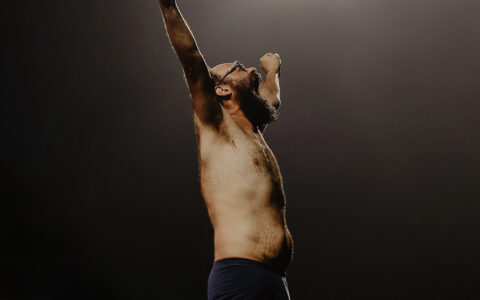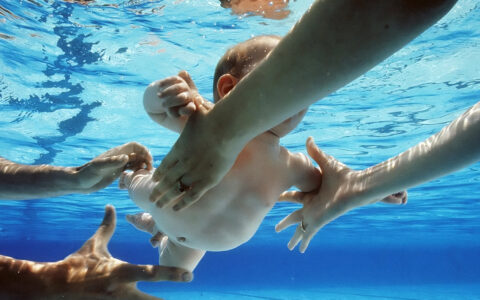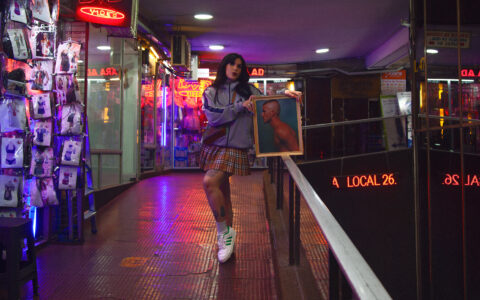The artist Nicolas Garner melts the boundaries between organic and digital, throwing bridges between the philosophy and the religion. Welcome to a cyberpunk conversation.
Puedes leer esta entrevista en español aquí.

Nicolas Garner is a visual artist and graphic designer who lives between Lausanne and Paris and has a master’s degree in Art Direction at ECAL. He works in different fields of art, with the creation of images and also in the creative direction from transdisciplinarity.
His work has been exhibited in France, Germany, England, and a lot of other places.
The proposals that the artist approaches seek the representation of the human body digitized and overflowed with technology and philosophy.
We talked to Garner about his work and this is what he told us.
I would like to know why the politics of confusion interests you so much? Exploring your work I can realize this confusion between reality and fiction, which you like to prove with your hyperrealism. Could you tell me a little more about it?
My practice, on a questioning level, characterizes itself by a desperate quest for the materialization of the digital world and conversely, the attempt to digitalize the organic.
This clash, this irreconcilable opposition between the digital and the organic is what I am looking for. Indeed, many of my projects clearly question the representation of the body and how the digital shapes it. Some, like Hyperreality and Genesis 1:27, tend to exploit the thin gap between photography and cgi, challenging our trust into digitally-constructed images in the context of our post-photographic era.
Using hyperrealistic 3D features, I like to blur the boundaries between realness and falseness. Especially when you can’t tell what you see in the end, or the techniques used, and you just look beyond that, embracing the mystery of the image.
Why did you decide to name this collection under the name of Genesis 1:27? Why a religious name? I understand what G1: 27 says, but what is your relationship with religion? with the gods or spirituality and how that is reflected in your work?
I was raised in the Catholic tradition and all of these esoteric references and religious iconography keep being an important background and source of inspiration to me, even if only from an aesthetic, literary or sentimental point of view. But more specifically, for this project, the idea was to emphasize the cynicism of our modern societies where human life (the last entity that was spared by the market so far) now tends to be promoted as a commodity in the age of late capitalism.
That’s why I chose to confront a commercial aesthetic to mystical and religious references. Genesis 1:27 also refers to the Creation by correlating the concept of avatar to the metaphor of birth. Giving birth to an improved version of oneself could look like, by extension, a way to play God.
How does technology represent the body?
What I find fascinating in the digital representation of the body is that it is vain by essence. It is very legitimate to wonder about the relevance of the use of these technologies in the quest for a faithful representation of the body. It seems obvious that this type of tools, having intrinsically an exclusively numerical reading, is therefore a stranger to the complexity of the body of flesh and bone.
How can we imagine that a reading based on 0 and 1 can recognize, understand and thus transcribe the organic materiality of the body in a digital way? These technics are unfit to identify its asperities, its grain, its folds, its movement, its fragility, its hairiness, its moleness, its articulation… They can only copy a falsified, obsolete, wobbly image. And, even if their performances progress quickly, they are struggling to approach its realness. The machine seems to enclose the body in a stranglehold which is foreign to it, to impose an interpretative framework which is not his own. « Deleuze and Merleau-Ponty, The philosophical concepts of meat and flesh », an essay by Daniela Voss is a good landmark to recontextualize the problematics of the materiality of the body in art.
In essence, art does not reside in perfection or in scientific accuracy. In fact, it is precisely this intersection between the real and the digital world, between organic and technologic that captivates me.
How works reality from your perspective of post-human bodies?
I am very interested in the concept of uncanny valley for instance: a 1070’s theory of the Japanese roboticist Masahiro Mori, according to which «the more an Android robot is similar to a human being, the more its imperfections seem monstrous to us.» This theory, which applies mainly to robotics, is interesting to put in parallel with the representation of the body by technology.
The advanced explanation of this phenomenon is that when an entity is sufficiently nonhuman to be immediately identified as a robot, a human being will tend to note his few human aspects and to have some empathy for this machine which Is a bit like a human but is no more assimilable than an animal would be.
When the entity has an almost totally human appearance to the point of causing confusion, a sensation of strangeness is caused by each of its non-human aspects.
A robot located in the «uncanny valley» is no longer judged according to the criteria of a robot successfully posing as a human but is unconsciously judged as a human being unable to act in a normal way.
Another theory is that behavioral abnormalities presented by humanoid robots resemble anomalies present in seriously ill people or on corpses. This assimilation provokes an instinctive rejection all the more so as if there are social norms to behave before a sick person or before a corpse, reactions before a robot are not codified by any social rule.
Litterature and philosophy is also a great source of inspiration for my work. Works by Donna Haraway for instance, or Robert Pepperell on the Post-Human… I think some of my projects also refer to the aftermath of hypermodernity. Philosopher Gilles Lipovetsky’s work also nourished my reflection when he describes that the world is now experiencing the praise of hyperindividualism, consumption, ultra-liberalism, spectacularization with multiplication of screens, etc.
Moreover, there are connections with all the ethical issues related to the impact of technology on the body that are more and more numerous like identity falsification, deshumanization, manipulation, etc.
In what direction do you think art is going? What place does your work occupy within the spectrum of art?
First of all, we can note that this whole digital art scene that was born on the internet has invaded the physical world and the museum space with installations, sculptures and every possible kind of forms during these last years… So from a flat screen, we got these three-dimensional pieces spreading all over the place using a huge amount of references from pop culture, art history, tv show…
Art is always coming back to past styles but re-interprating them thanks to new tools or techniques.
Consequently, since reality is increasingly challenged by the virtual world and technologies are progressing so fast, art exhibitions will definitely get more and more immersive and interactive, and propose total experiences. These new approaches and tools, once became totally fluid extensions of the space, will surely open up tremendous new possibilities.
But the future of art is also questioned by the rise of instantaneous data that also influences the way we look at art nowadays.
What must be – or become – an exhibition in the twenty-first century? Is art still to hide behind the fake neutrality of the white cube to establish its legitimacy – in so far as many artists make the Internet their first exhibition venue? What place should the artist occupy in the social space and how can he interact with his contemporaries?
All these questions are being addressed to the artists now, while traditional ways of showing art are getting more and more obsolete. There will always be museums and galleries but the experience you live inside of them keeps evolving through the years.
I picture my work as part of this emerging movement. I produce digital pieces to stay and live in the digital space and sometimes to reach a certain materiality through installations or video projections as well. But I would also say that my work is in a perpetual evolution, with no defined shape, as it is hybrid not only visually but also in terms of mediums. I like to challenge myself by experimenting different techniques and technological innovations to get the best aesthetical and conceptual translation to my idea.
You can follow Nicolás Garner and check his work.













